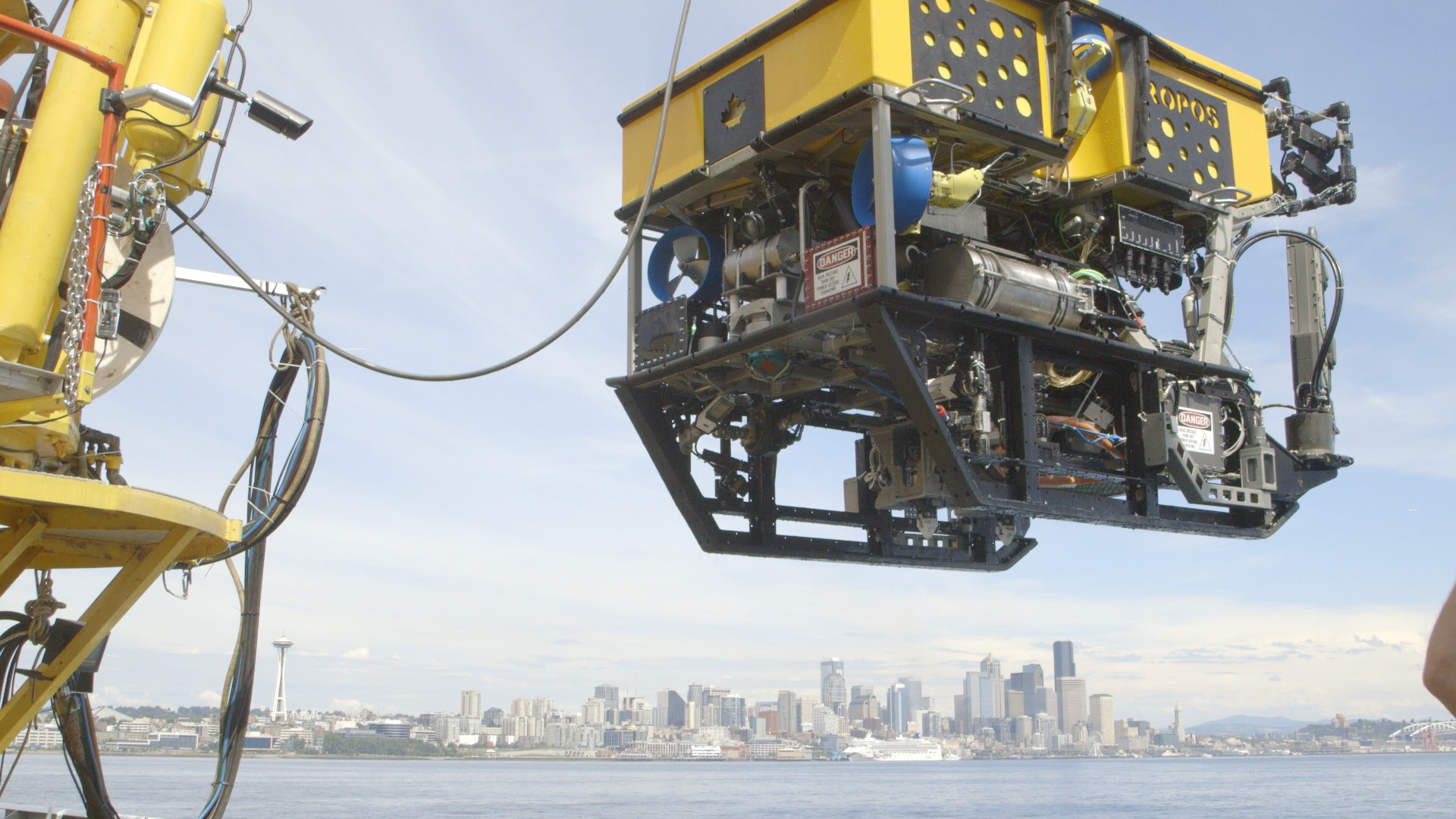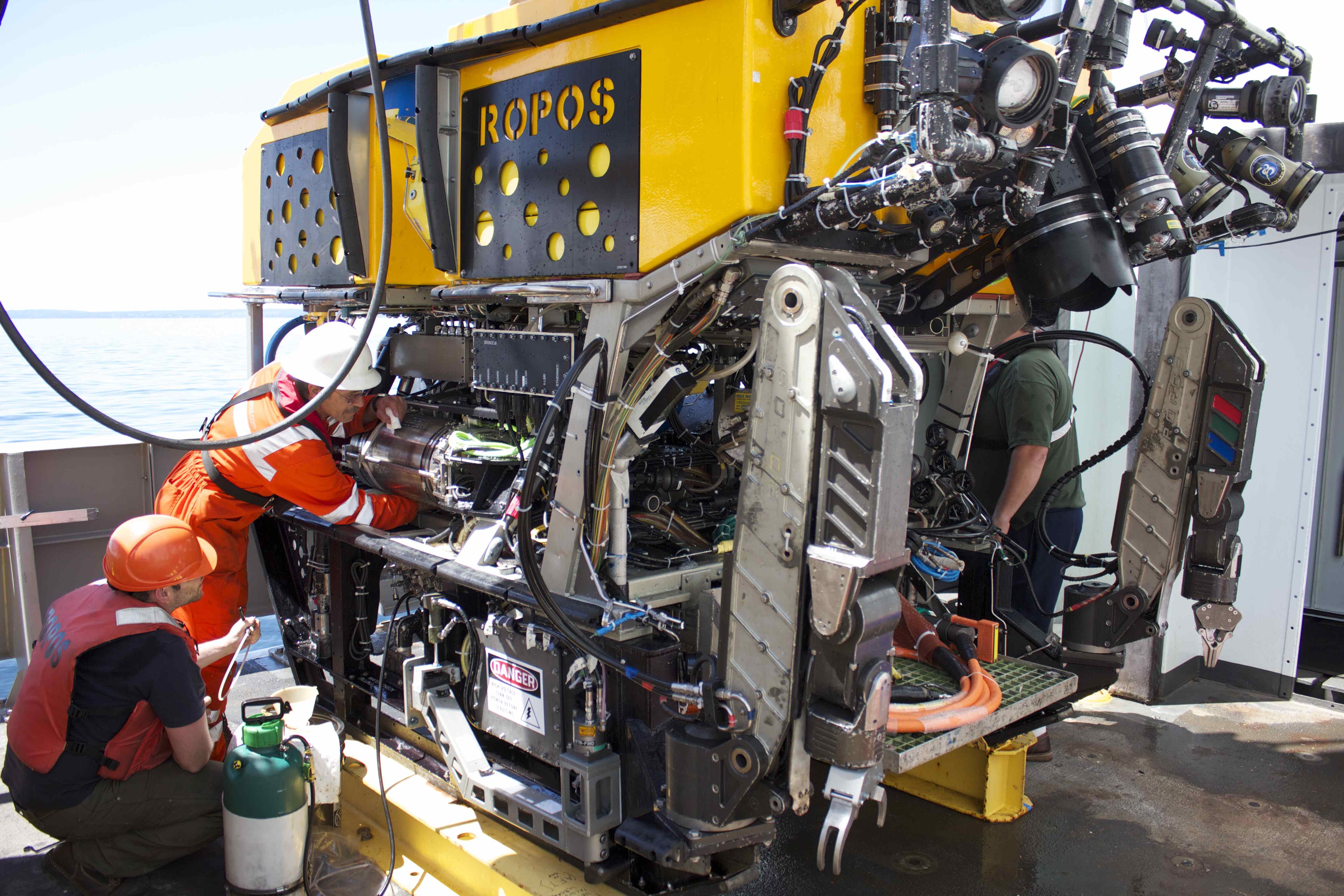Image Archive





























The gangway is taken up at the UW dock as the R/V Thompson prepares to set sail on the first leg of VISIONS '13. Photo by Nancy Penrose

Having just cast off from the UW dock, the R/V Thompson heads out on the first leg of VISIONS '13 Photo by Nancy Penrose

Entering the Ballard Locks Photo by Mike Mulvihill

A wave from Chief Scientist John Delaney, with Allison Fundis, as the Thompson passes through the Ballard Locks. Photo by Mike Mulvihill

Perhaps there are future ocean scientists and engineers among those watching as the Thompson waits in the Ballard Locks. Photo by Mike Mulvihill

Waiting at the Ballard Locks Photo by Mike Mulvihill

With the railroad bridge up, the Thompson leaves the Ballard Locks and heads for Puget Sound. Photo by Mike Mulvihill

ROPOS dunk test in Puget Sound, Seattle in background. Photo by Ben Fundis

Peparing for the ROPOS dunk test in Puget Sound. Photo by Ben Fundis

ROPOS vans and spools with OOI extension cables (orange) on aft deck of the R/V Thompson at the UW dock, Sunday 30 June 2013

Spools of extension cables (orange) on fantail of the R/V Thompson at UW dock, Sunday, 30 June 2013

J. Ryan Rembert

Ryan Cox

Julie Ann Koehlinger

Cover of program for The Longest River

VISIONS'14 Cruise Banner Image

Montgomery Taylor

Judy Twedt

Fredrik Ryden

Eric Olson

Emily Yam

Colin Katagiri

Claire Knox

Charlie Parker

Caitlin Russell

Ben Fundis

During the VISIONS'13 expedition, low frequency hydrophones, coupled with broadband seismometers, will be deployed at the base of the Cascadia Margin (Slope Base), and at the base of and summit of Axial Volcano.

finaldowntothevolcanolongcredits
- Anemone
- Animal
- Arthropod
- ASHES
- Axial
- Axial Base
- Axial Biology
- Axial Caldera
- Bacteria
- Basalt Lava
- BEP
- Biofouling
- biolgoy
- Biology
- Camds
- Camera
- Camhd
- Central Caldera
- Ciliates
- Cnidaria
- Coastal Biology
- Crab
- Deep Profiler Mooring
- Dive Highlights
- Eastern Caldera
- Echinoderms
- Endurance Array
- Engineering Team
- ENLIGHTEN 10
- Exploratorium
- Fish
- Geology
- HD Camera
- HPIES
- Hydrate Ridge
- Hydrates
- Hydrophone
- Hydrothermal Vents
- Illustration
- Inshore 80 Meters
- Instrument
- International District
- J-BOX
- Jason
- Jellyfish
- Junction Box
- K12
- Lava
- Mollusk
- Moorings
- Nodes
- Nudibranch
- Octopus
- OOI
- Oregon Offshore
- Oregon Offshore 600 m
- Oregon Shelf
- Oregon Slope Base
- People
- PN1B
- PN1D
- Polychaetes
- PPSDN
- Primary Node
- RASFL
- ROCLS
- ROPOS
- ROPOS Dives
- ROV Team
- RV Revelle
- RV Sikuliaq
- RV Thompson
- Salp
- Sample
- SC13
- Science Team
- Sea Cucumber
- Sea Star
- Sea Urchin
- Seafloor
- Seismometer
- Sensors
- Shallow Profiler Mooring
- Shark
- Shipboard
- Shore Station
- Slope Base
- Smoker
- Soft Coral
- Southern Hydrate Ridge
- Sponge
- Squid
- Students
- Students & Guest Participants
- Tmpsf
- Tubeworms
- VISIONS 11 Leg 1
- VISIONS 11 Leg 2
- VISIONS 11 Viewers
- VISIONS 13
- VISIONS 14
- VISIONS 15
- VISIONS 16
- VISIONS 17
- VISIONS 18
- VISIONS 20
- VISIONS 22
- VISIONS 23
- Visualization
